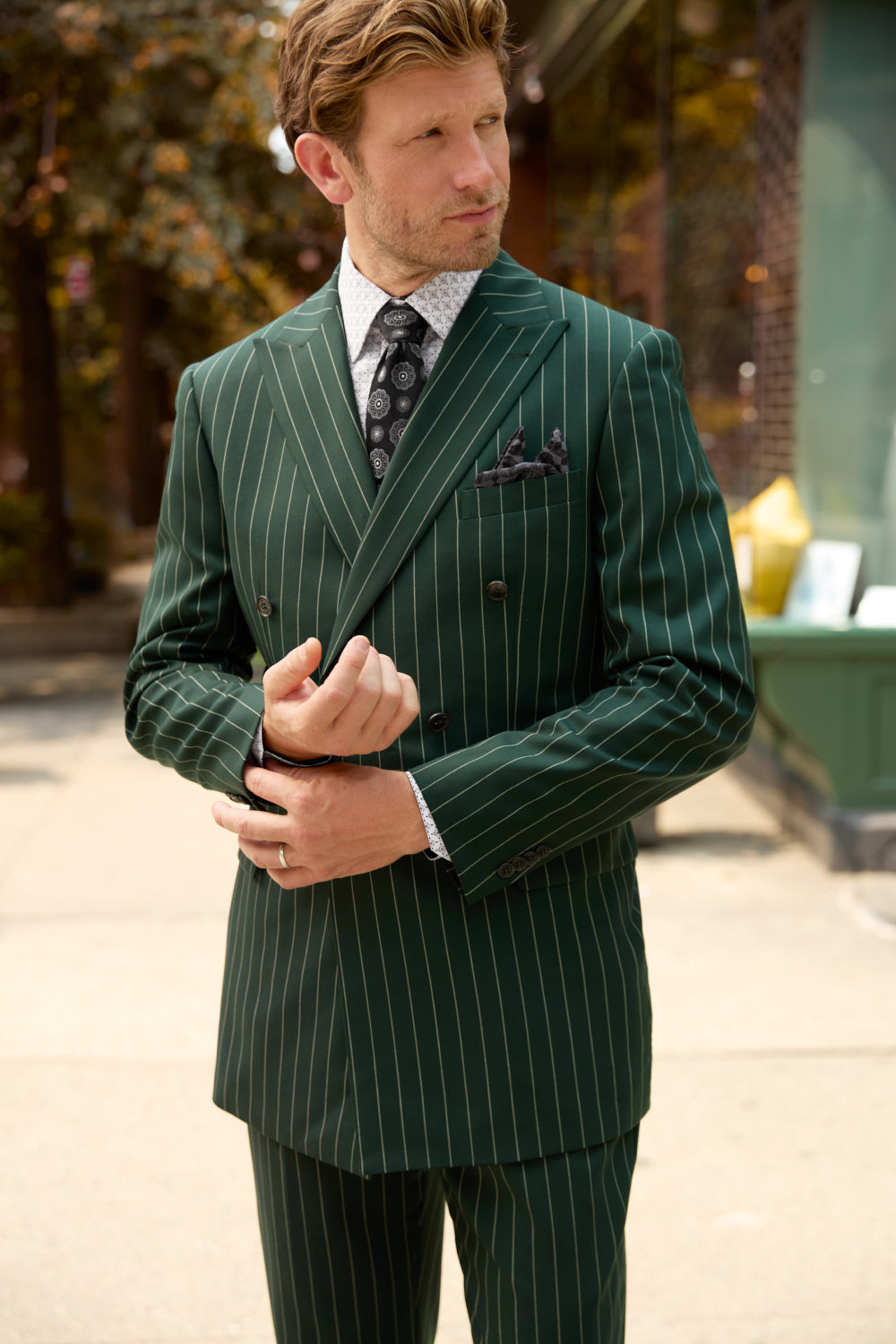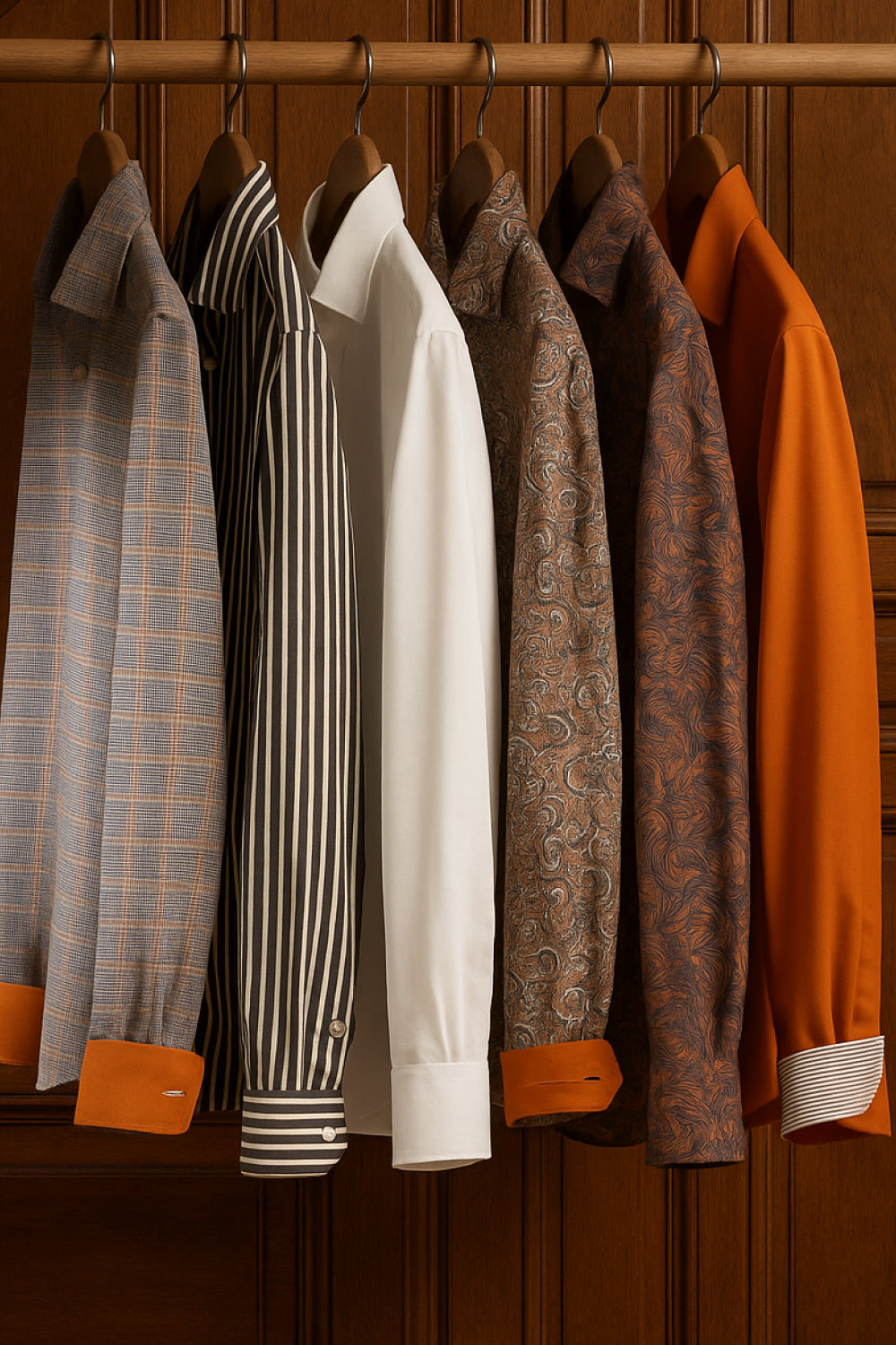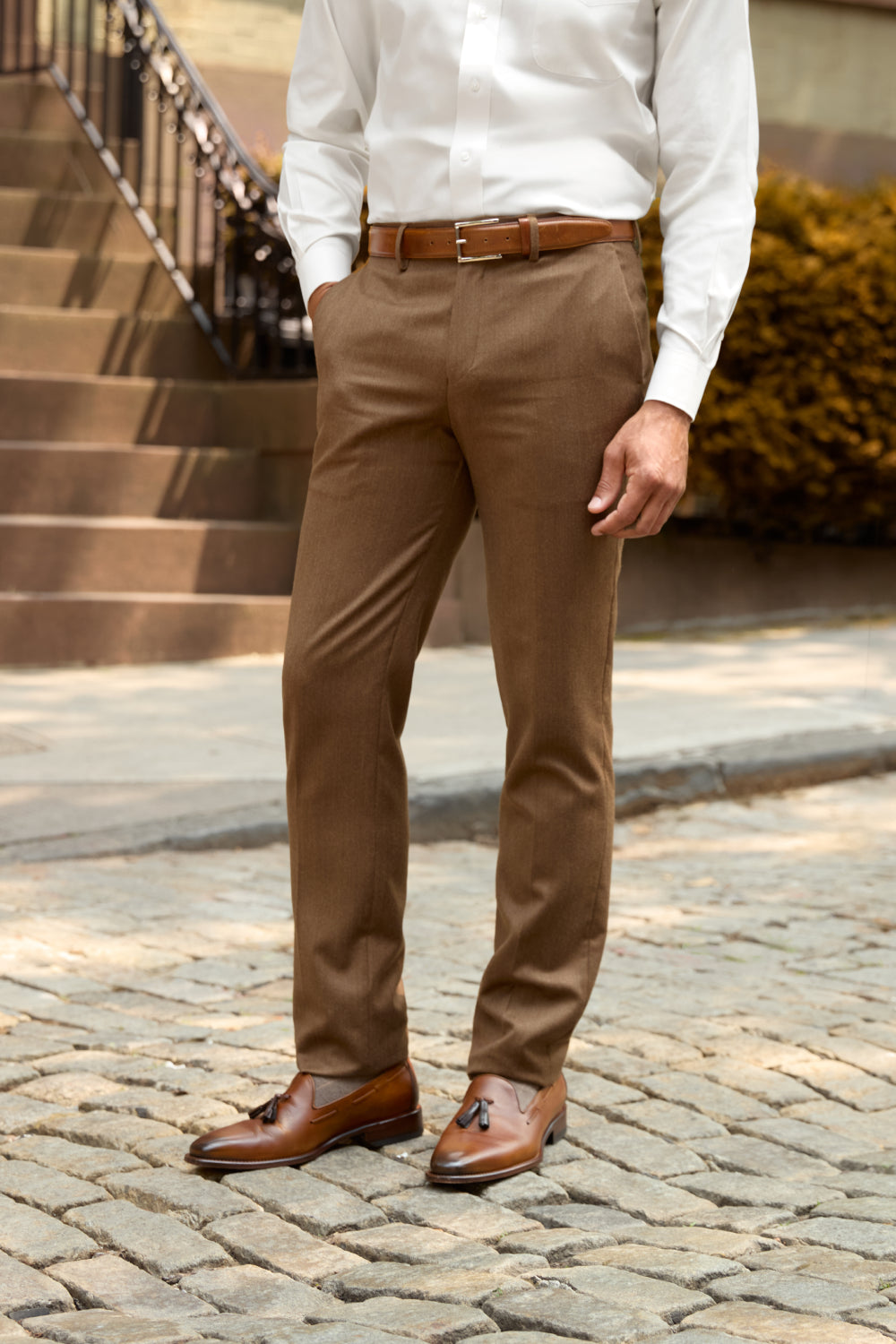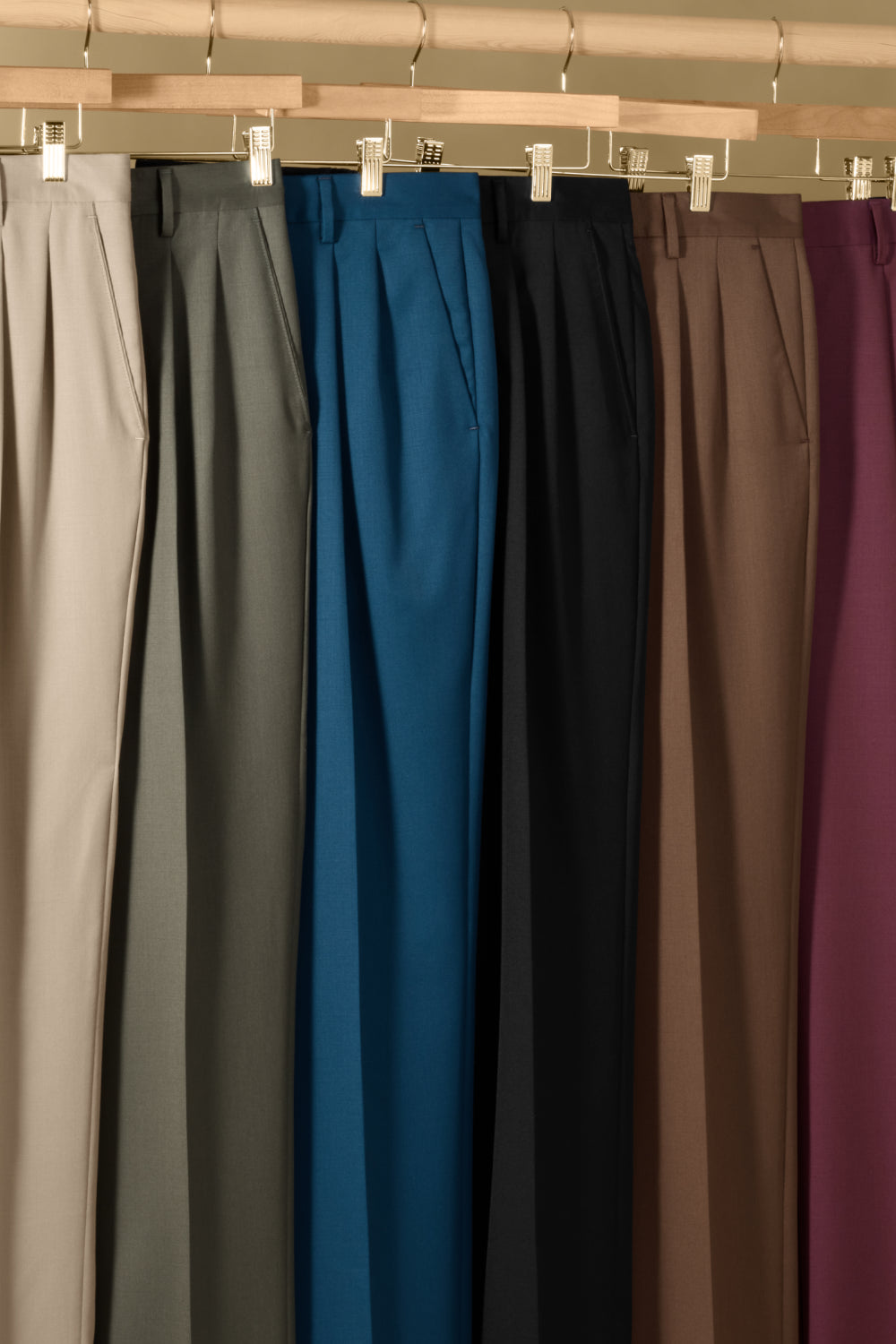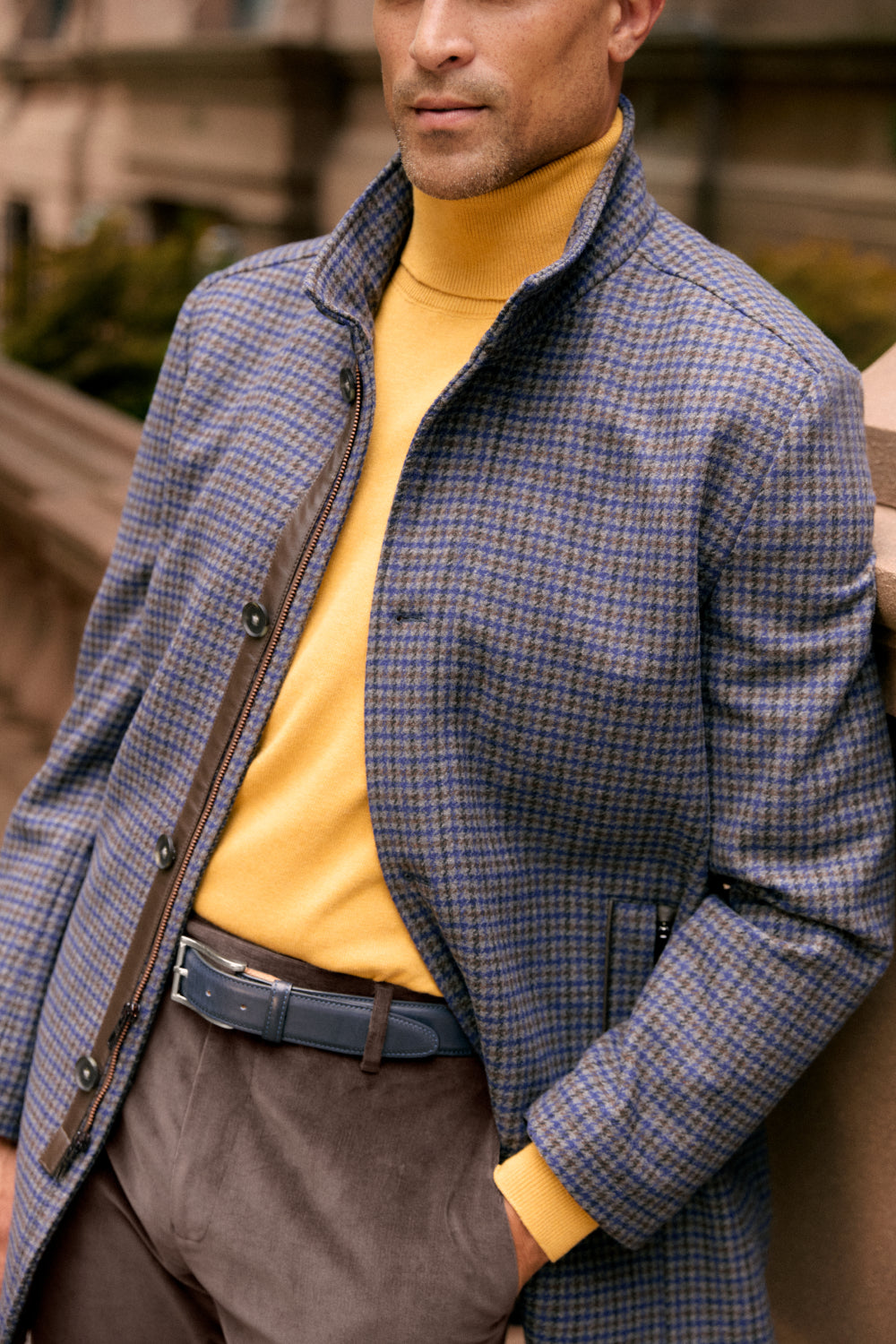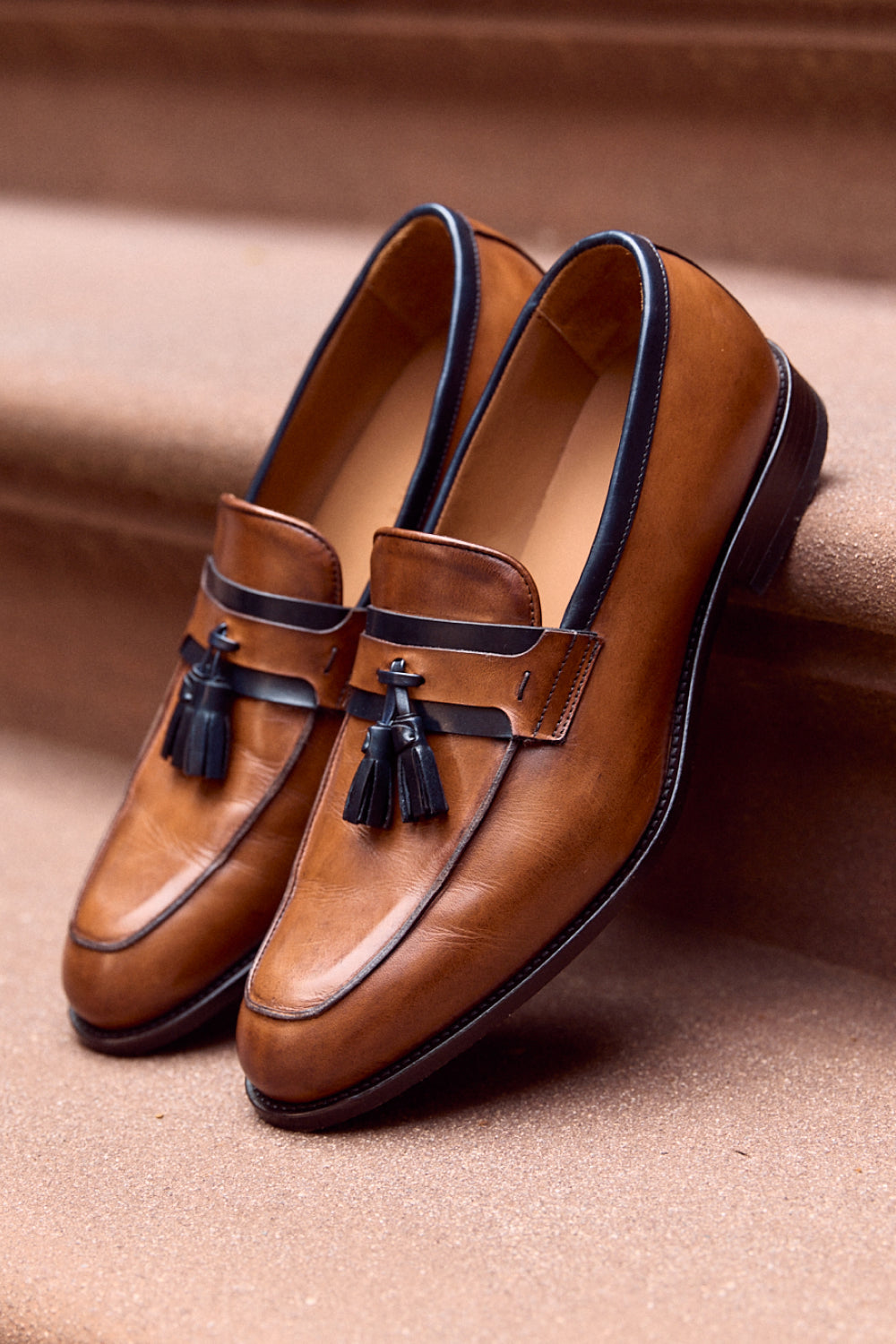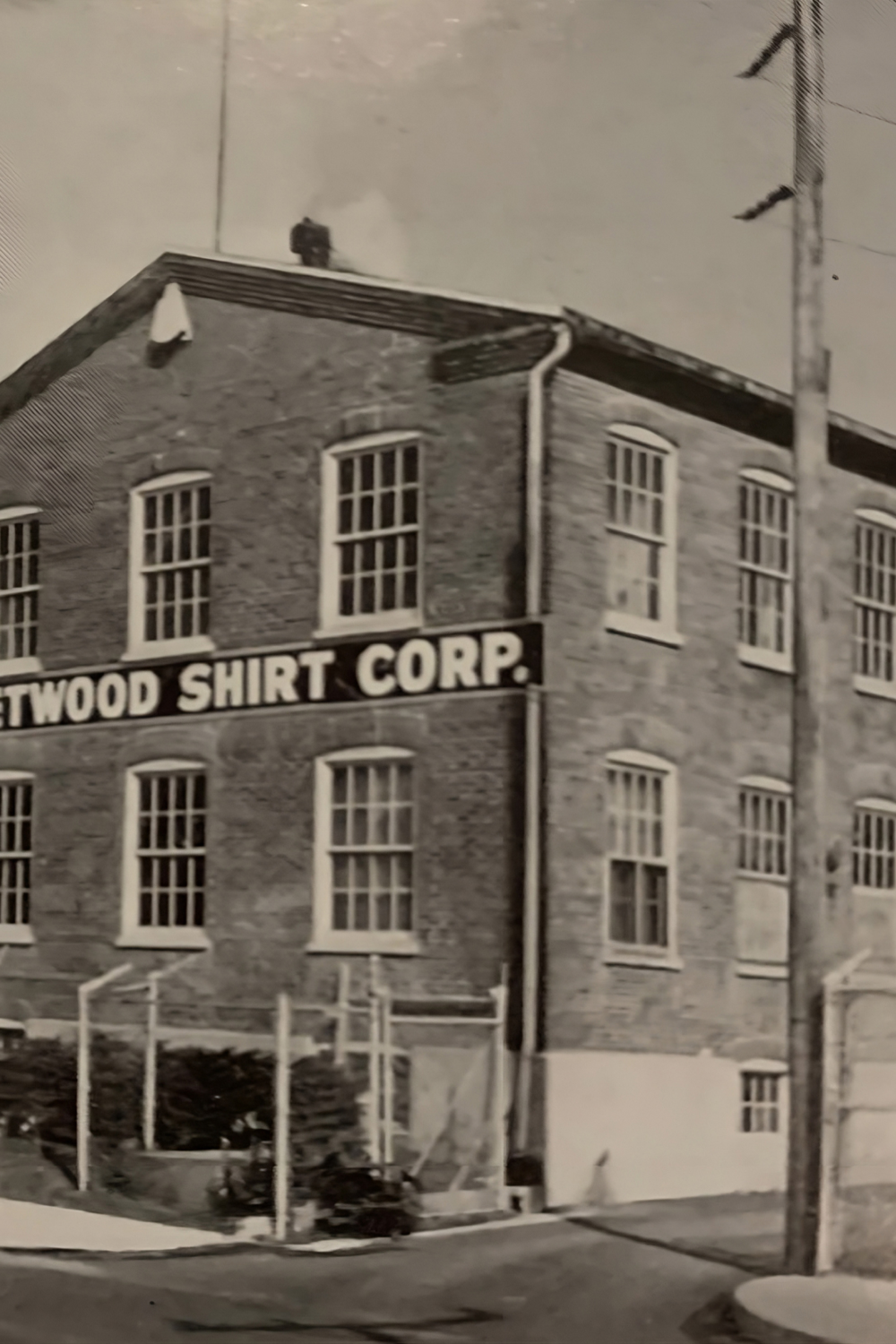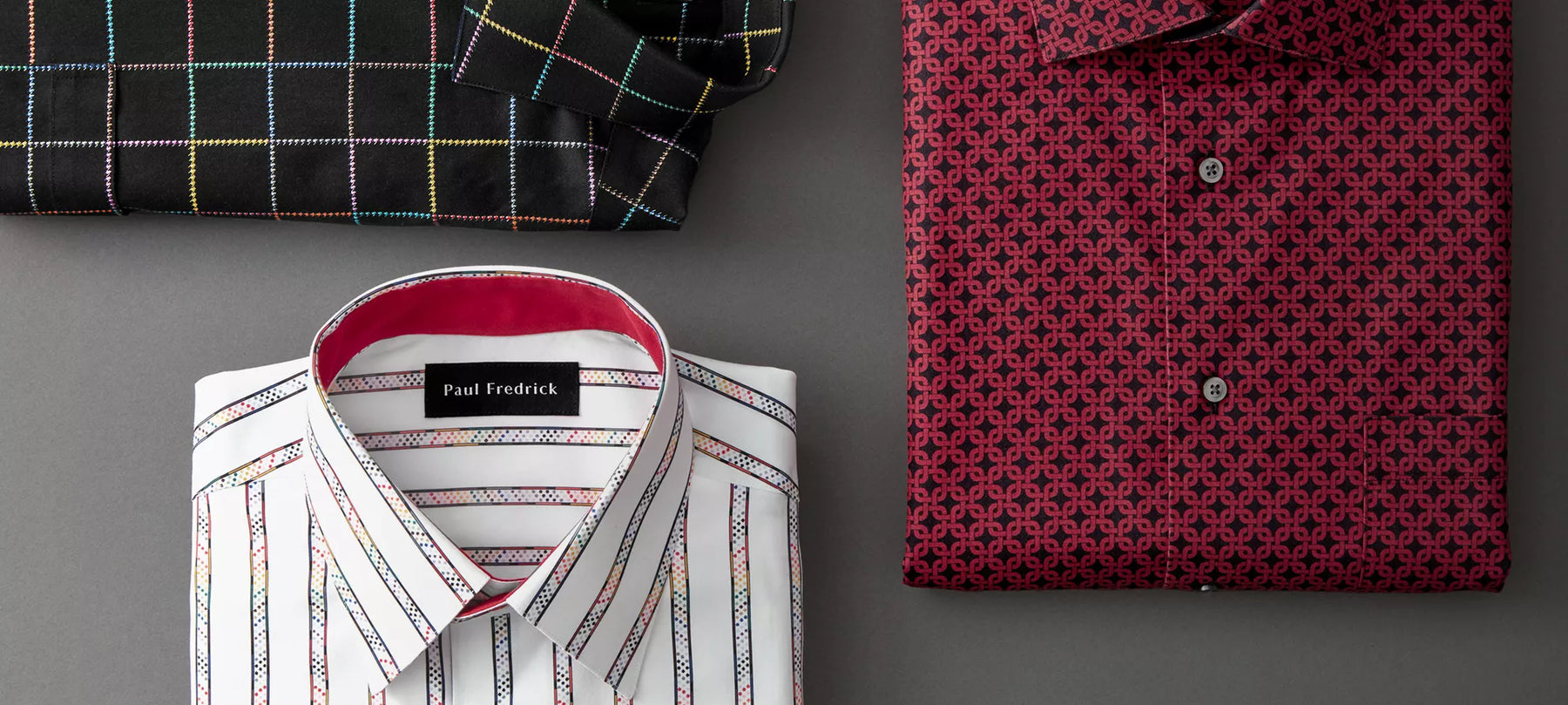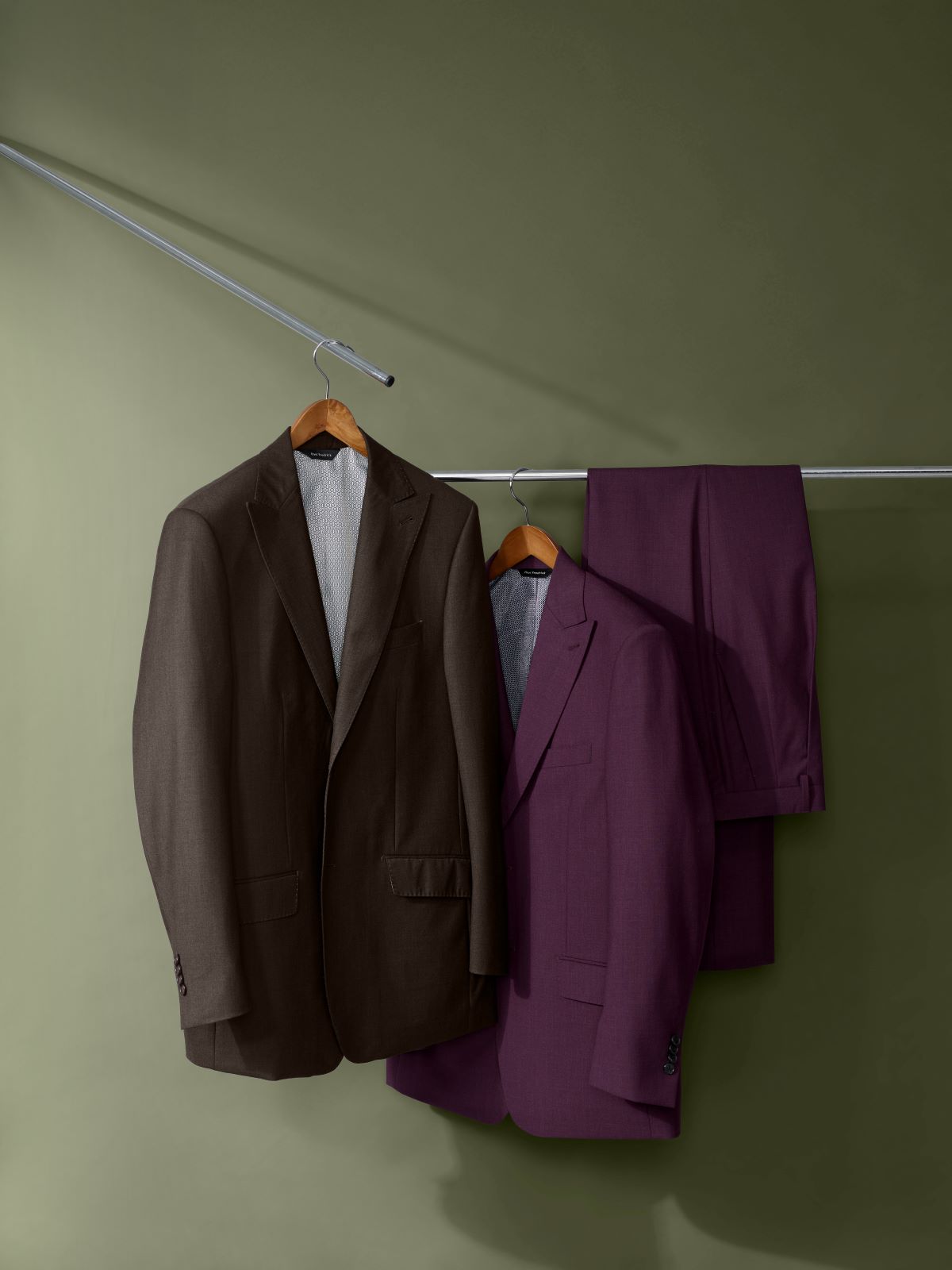Buying suits online can be tricky. The very real possibility of ordering a suit from a website only to discover upon receipt that it is not the quality, style or fit you expected is an understandable concern. It is also easier than you think to get exactly what you want. Knowing what you want – style and fabric as well as a baseline price you are willing to pay – is half the battle. The other half is as simple as getting your measurements right. Quickly reviewing the return policy is a smart safety measure too.
So, if you know what you want and your measurements, congrats! But if not, know you’re in good company and read on. We’re here to help you get exactly the suit you want and the fit you expect; no tricks, less risk.
Picking Your Suit
Start with the Basics
Purchasing a suit is often the largest investment a man will make in his wardrobe. Which is why you will want to take stock of what you have and make sure you’ve got the basics covered. Basics Suits:
- Solid Charcoal, Grey or Navy Suit
- Navy or Grey Pinstripe Suit
Why these colors/patterns? Because from work to wedding to whatever occasion may require a suit. These two options will always work in perfectly time-resistant fashion. They are a slam dunk in the men’s fashion world. Assuming you have the basics above covered, up your game to All-Star level with a few more distinctive but still classic choices.
- To achieve a clean, light look in a suit for warm weather opt for a lighter grey color. It’s a smart look that’s great for spring and summer. Lighter color suits are more for business casual, avoiding the serious look of the dark colors and lending themselves better to more temperate seasons versus traditionally darker hues.
- Once you have your staples covered and know your fit (what looks best on you) it’s time to deviate from strictly solid suits. Try out a windowpane pattern suit. The subtle hint of color in a windowpane can be accentuated with your shirt color or accessories.
- Make a seasonal play with fabric and pattern. If you’re looking for a stand-out cotton suit, opt for the cotton seersucker. Donegal tweed/wool is a classic choice with a bit of flair for cold winter days.
Selecting the Fabric
We recommend cotton linen or a lightweight wool fabric for warmer weather. For crisp fall days or cold winter months, we recommend a heavy to midweight wool or wool flannel fabrication.
For transitional seasons, midweight wools and lightweight blends are the smartest choices. Blends give you the best characteristics of combined fibers. These translate into a very versatile suit that easily accommodates both warm and cold weather in comfortable style. The most common blends combine fabrics like linen, cotton, silk, and wool.
These translate into a very versatile suit that easily accommodates both warm and colder weather in comfortable style. The most common blends combine fabrics like linen, cotton, silk, and wool.
A great choice for your 1st suit purchase or your 10th is the Paul Fredrick Essential Suit. Each piece of this suit can be ordered size specific in all the traditional solid colors and two windowpane colors.
Sharkskin (which by the way is a weave, not a fabric) is also a great choice for year-round. Our sharkskin suit is tailored from finely spun Super 130’s wool. Tailored in classic style, this weave is super lightweight giving a sleek and lustrous edge that allows for a comfortable transition into any season. You can also learn more about this classic weave in this sharkskin fabric post.
Choosing Your Style
Now the tailoring distinctions come into play. Details make a big difference from a strictly traditional suit to one with distinct modern swagger.
Buying Suit Jackets
Single or double-breasted: The most traditional is a single-breasted two-button suit. If you prefer a more distinctive look and you have the confidence to pull it off, opt for the double-breasted.
- Lapels: Two common lapel styles are peak and notch. You’ll always be safe with a simple notch lapel. It’s the classic choice for a single-breasted jacket. Peak lapels, which end in a point going out towards your shoulders, are the traditional choice with double-breasted jackets which lends themselves to a flashier, European type look.
- Venting: Refers to the slit-like openings found in the back portion of your jacket. These openings are there to give a man room and flexibility. Today you will see more suit jackets with side vents, however, it is still a classic choice to have a single back vent in your two-button suit jacket.
Buying Suit Pants
- Flat or Pleated: Whichever style fits you the best. Pleated front pants are still a classic choice. They can be worn as slim and stylish as its flat front counterpart. It’s about what you feel most comfortable and confident wearing. Give them both a try, depending on your build and where you prefer to have them sit on your waist, you may be surprised by what you feel most confident wearing.
- Pant Hem: Most quality suit pants are sold with an unfinished bottom hem. Many online retailers will finish your pants for you. So, you may need to make a decision on whether or not you want to bring them to a tailor before you check out. For example, paulfredrick.com will tailor pants to your precisely measured inseam and you choose the finish, plain or cuffed hem.
If you could use a little length in the legs, get a plain hem, it tends to make you look a little taller. If you choose a cuff, it should be between 1 ¼” – 1 ½” in length. The way your pants fit is important, particularly when your jacket comes off.
If all these choices are overwhelming, go with the classic model suit: single-breasted, two buttons, notch lapel jacket. Pair with a pleated front pant, sized and tailored to fit you perfectly. This timeless combination works every time.
Choosing Your Fit
Fit makes all the difference. So pay particular attention to the shoulders and waist in creating the most flattering shape for you. Paul Fredrick specializes in classic fit suits for the modern man. Plus, we specialize in online and catalog attire, so we have expertise in helping men order the best suit without having to go to a store and try one on. Tailor your suit to best flatter your personal build. Paul Fredrick’s line of Essential Wool Suit Separates allows maximum customization: trousers can be flat or pleated, jackets can be single or double-breasted and there's even the option of a third piece, the lapel vest.
When You’re Ready to Shop
Once you’ve decided what you want your suit to look like and what features work for your style and body type, it’s time to start shopping online.
Here’s what you’ll need to know before adding to cart:
Taking Measurements
Taking your measurements will aid in selecting your perfect size and help you order any custom pant or sleeve lengths. You may want a friend to help you take your measurements.
To size a jacket, chest measurement is key. Stand up straight with your arms hanging straight at your sides. Measure the fullest part of your chest, under your armpits, while keeping the tape parallel to the floor. If you desire a certain sleeve length and selecting a custom one is available, you can take your sleeve measurement in three steps.
- Measure from the base of your neck to your shoulder seam
- Measure from your shoulder seam to your wrist bone
- Add these two measurements together to equal your sleeve length
This measurement will help you have the perfect amount of shirt cuff showing. Which is approximately one-half inch below the jacket when your arm is at rest.
Pants measurements are done by measuring around your torso where you normally wear your pants. For length, measure a pair of pants in your closet that fit well. Lay the pants flat and measure the inseam, from the crotch to the bottom of the leg.
For more information on measuring for buying a suit and other essential wardrobe items, check out Paul Fredrick's size charts with detailed pictures, instructions, charts, and even a video on how to properly measure.
Six Tips and Tools for Suit Shopping Online
- Measure twice, order once for the perfect fit.
Companies have specific measurements and size charts so know your precise measurements and refer to the specific company’s size chart before every purchase.
- Simplify your life and purchase complementary pieces at the same time.
If you are developing your basic suiting wardrobe, you need a shirt and tie in tones that go with your suit. Whether buying your first suit or your 50th. If you are buying a tie and plan to wear a pocket square, they should complement (not match perfectly) each other. A good assortment of accessories can always bring your wardrobe to the next level. So now is the ideal time to look. Not only will you save on shipping with everything in one order. But you can use the color swatches on the website pages to ensure that all the patterns and colors will coordinate.
- Look for extra savings with offers.
Most companies have seasonal offers to help you save. Also, check online coupon sites for potential coupon codes.
- Read and know the return and exchange policies.
These policies can be a major hint at the care, quality, and service you can expect from the garment and the company you choose to buy from. Many retailers charge additional shipping fees for exchanging items and you must do this within a certain number of days. Here at Paul Fredrick, we allow returns and exchanges within 90 days of purchase. We guarantee you a perfect fit and will do our utmost to help you achieve that, even if it means exchanging. For more details please go to our shipping page.
- Read the reviews.
People write reviews for a reason. They want other customers to know what they think about the product and services. Unfortunately, most people write reviews when they have something to complain about. Keep that in mind as you read the reviews for your insights into the customer service and the quality of the merchandise.
- Call the toll-free number for customer service.
Call if you're unsure that you read the measurement chart correctly, have questions about placing and shipping your order, or about the fit of your suit. Customer service representatives should be standing by to help. If you cannot find a number to call, this speaks to the quality of the merchandise and company. At Paul Fredrick, you can not only contact us by phone 1-800-247-1417. Or by email, by reaching us through our contact page.
There is no need to buy ill-fitting clothes when you have all the insights you need to buy a suit online. Now that you know the basics, what are you waiting for? Go find your perfect suit or suits today at Paul Fredrick.
